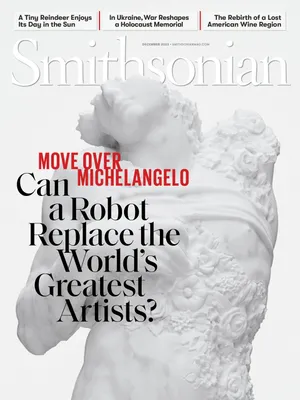Why Can’t Machines Process CO2 Like Trees? And More Questions From Our Readers
You’ve got questions. We’ve got experts
:focal(550x413:551x414)/https://tf-cmsv2-smithsonianmag-media.s3.amazonaws.com/filer_public/cc/0b/cc0b59ac-8470-44de-bd79-d3db9871bbed/ask.jpg)
Why can’t machines process CO2 the way trees do? Tom Brewer | Ponder, Texas
There are machines that absorb CO2, but they do it differently from trees. When plants perform photosynthesis, the carbon becomes part of their leaves, stems and trunks. Machines, on the other hand, turn CO2 from a gas into a liquid and store it underground. As of now, forests and wetlands are much more effective than machines at pulling carbon out of the air, and they provide other benefits like oxygen, water filtration and animal habitats. The main drawback is that plants eventually decompose and release the carbon. Better technology might someday help us store huge amounts of carbon deep in the earth for as long as 10,000 years. To solve the climate crisis, we’ll need to use both nature and technology—and, above all, reduce the amount of CO2 we release. —John D. Parker, senior scientist, Smithsonian Environmental Research Center
We know that stars are round. Why do humans see (and draw) them with points? James Cloonan | Rochester, New York
Stars are so far away that they appear very small—too small for their round shapes to be seen. When we look at a star, the Earth’s atmosphere distorts its image, the way heat rising from a campfire seems to create ripples. This makes the starlight bounce around and “twinkle.” (Artists often depict stars with points, though not always. Vincent van Gogh painted them as glowing balls.) Planets in our solar system can be identified by eye because their apparent sizes are large enough that they don’t twinkle. —Howard Smith, senior astrophysicist, Center for Astrophysics | Harvard & Smithsonian
How are insects able to hover? Ken Dias | Toronto
Many insects hover, but how well they do it depends on how big they are and how rapidly they flap their wings. Flap too slowly for your size and you can’t remain stationary (think big butterflies). Insects typically hover by flapping around 110 beats per second, using a combination of strokes that creates a three-dimensional figure-eight pattern. Hummingbirds evolved to use a similar figure-eight pattern, though they’re anatomically very different from insects. —Floyd Shockley, entomology collections manager, National Museum of Natural History
What was the evidence or theory behind the Dick and Jane books? Ellie Duram | Wichita, Kansas
Students in the 19th century learned to read from the Bible, primers, Webster’s Blue Back Speller and McGuffey Readers, which taught morality along with phonics—the sounds made by individual letters and letter combinations. By the 1920s, reading specialists—such as those working with John Dewey and William Scott Gray at the University of Chicago—were advocating for the “whole word” method, in which children learned to recognize shapes of words. Gray’s colleague Zerna Sharp is credited with the idea for the Dick and Jane books, which used a limited vocabulary and clear pictures to tell stories about suburban siblings. In 1955, Rudolf Flesch’s best seller Why Johnny Can’t Read—And What You Can Do About It criticized the “whole word” method for not preparing students to read at higher levels the way phonics-based methods do. The publisher updated Dick and Jane in 1967, but phased the series out by the 1980s. —Debbie Schaefer-Jacobs, curator of Home and Community Life, National Museum of American History
